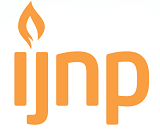The Assessment of Nurse’s Performance by Using a Logbook in Hospital
Abstract
Background: Nurses are the majority of human resources in the hospitals whose role determines the quality of health care and they are most closely associated with patients. They are the most dominating human resources in hospital who have the most frequent interaction with the patients. Therefore, the primary indicator of the hospitals' quality service is in its nursing services. The capabilities and competencies of the nurses can be assessed through a nursing logbook strategy.
Objective: This research aimed to explore the implementation of performance assessments using the nursing logbook.
Method: This research was conducted using a qualitative method with a phenomenological approach. Data collection was conducted from November to December 2017 by using in-depth interviews with six participants who were selected by using purposive sampling techniques. The participants were nurses in Dr. H. Moch. Ansari Hospital.
Results: The research results covered six themes, namely the existence of a nursing logbook for nurses, the purpose and the benefit of logging book in nursing, the relationship between a nursing logbook and credentials, the implementation of nursing logbook, the constraints or the barriers in the implementation of the nursing logbook, and the expectations of nurses towards the nursing logbook.
Conclusion: The system of implementing the logbook as a tool for the nurses' performance assessment is not optimal due to the limited socialization to the nurses in the hospital.
Keywords
Full Text:
PDFReferences
American Nurses Association Leadership Institute. (2013). Competency Model. Available (https://www.nursingworld.org/~4a0a2e/globalassets/docs/ce/177626-ana-leadership-booklet-new-final.pdf) (Accessed 27 December 2017)
American Nurses Association. (2010). Nursing Administration: Scope and standards of practice. Nursesbooks.org.
Ayed, A., Thulth, A. S., & Sayej, S. (2015). Impact of Night Shift and Training Development Factors on Performance of Professional Nurses in North West Bank Governmental Hospitals. Journal of Education and Practice, 6(27), 50-60.
Cusveller, B., & Schep-Akkerman, A. (2016). Towards a competency assessment tool for nurses in ethics meetings. Nursing Ethics, 23(4), 413-420.
Benner, P. (2001). From novice to expert: excellence and power in nursing practice. Menlo Park, Calif: Addison-Wesley
Departemen Kesehatan Republik Indonesia. (2003). Standar Prosedur Operasional (SPO) tentang Pemeliharaan dan Optimalisasi Pemanfaatan Sarana Rumah Sakit dan Alat Kesehatan. Jakarta: Depkes. RI
Dessler, G. (2015). Manajemen Sumber Daya Manusia. Jakarta: Salemba Empat
Ellis, J. R., & Hartley, C. L. (2012). Nursing in todays world: Trend, issues and management 10th ed. Philadelphia : Wolters Kluwer Health/Lippincott Williams & Wilkins
Harlie, M. (2010). Pengaruh Disiplin kerja, Motivasi dan Pengembangan Karier Terhadap Kinerja Pegawai Negeri Sipil Pada Pemerintah Kabupaten Tabalong di Tanjung Kalimantan Selatan”. Jurnal Manajemen dan Akuntansi. 11(2), 117-124.
Hasibuan, M. S. (2007). Manajemen Sumber Daya Manusia, cetakan kesembilan. Jakarta: PT Bumi Aksara.
Holt, D. T., Helfrich, C. D., Hall, C. G., & Weiner, B. J. (2010). Are you ready? How health professionals can comprehensively conceptualize readiness for change. Journal of general internal medicine, 25(1), 50-55.
Huber, D. (2013). Leadership and nursing care management. Elsevier Health Sciences.
Kleinpell, R. M., Hravnak, M., Hinch, B., & Llewellyn, J. (2008). Developing an advanced practice nursing credentialing model for acute care facilities. Nursing administration quarterly, 32(4), 279-287.
Lin, C. J., Hsu, C. H., Li, T. C., Mathers, N., & Huang, Y. C. (2010). Measuring professional competency of public health nurses: development of a scale and psychometric evaluation. Journal of clinical nursing, 19(21‐22), 3161-3170.
Liou, S. R., & Cheng, C. Y. (2014). Developing and validating the Clinical Competence Questionnaire: A self-assessment instrument for upcoming baccalaureate nursing graduates. Journal of Nursing Education and Practice, 4(2), 56-66.
Marquis, B.L. & Huston, C.J. (2010). Kepemimpinan dan Manajemen Keperawatan: Teori dan Aplikasi. Edisi keempat. Jakarta: EGC.
Rivai, V., & Basri, A. F. M. (2005). Performance Appraisal: Sistem yang tepat untuk menilai kinerja karyawan dan meningkatkan daya saing perusahaan. PT Raja Grafindo Persada.
Robbins, S.P., & Jugde, T.A. (2008). Perilaku organisasi. (Diana Angelica, Ria Cahyani, Abdul Rosyid, Penerjemah) (Ed.12). Jakarta : Salemba Empat.
Strasser, P. B. (2012). Occupational and environmental health nursing: The foundations of quality practice. Workplace health & safety, 60(4), 151-157.
Sugiyono. (2014). Metode Penelitian Kuantitatif Kualitatif dan R&D. Bandung: Alfabeta.
Suroso, J. (2012). Penataan sistem jenjang karir berdasar kompetensi untuk meningkatkan kepuasan kerja dan kinerja perawat di rumah sakit. Eksplanasi, 6(2).
Tomey, A. M. (2008). Guide to nursing management and leadership. Australian Nursing and Midwifery Journal, 15(11), 41.
Vandenhouten, C. L., DeVance‐Wilson, C. L., & Little, B. B. (2015). Credentialing public health nurses: Current issues and next steps forward. Public Health Nursing, 32(5), 565-576.
Werther, W. B. & Davis, K. 1996. Human Resources and Personnel Management. (Ed. Ke-5). New York: McGraw-Hill Companies.
Witjaksono, Arif; Siti Sugih Hartiningsih, & Galih Indriana. (2017). Hubungan Motivasi Kerja dengan Kinerja Perawat Instalasi Rawat Inap Di Pusat Mata Nasional Rumah Sakit Cinendo Bandung Tahun 2017. Jurnal Sehat Masada. 10(5), 1-10.
DOI: https://doi.org/10.18196/ijnp.3297
Refbacks
- There are currently no refbacks.

This work is licensed under a Creative Commons Attribution 4.0 International License.
IJNP (Indonesian Journal of Nursing Practices) are indexed by:
Office:
School of Nursing, Faculty of Medicine and Health Science, Universitas Muhammadiyah YogyakartaSiti Walidah Building F3, 4th floor.
JL. Brawijaya, Tamantirto, Kasihan, Bantul, Yogyakarta 55183
Email: IJNP@umy.ac.id
Web: http://journal.umy.ac.id/index.php/ijnp

Indonesian Journal of Nursing Practice is licensed under an Attribution 4.0 International (CC BY 4.0) license.



















.png)
